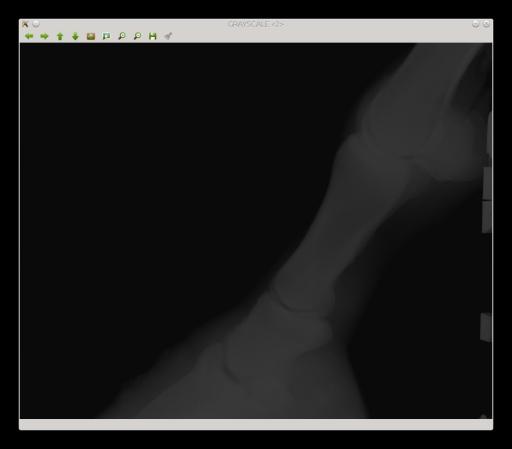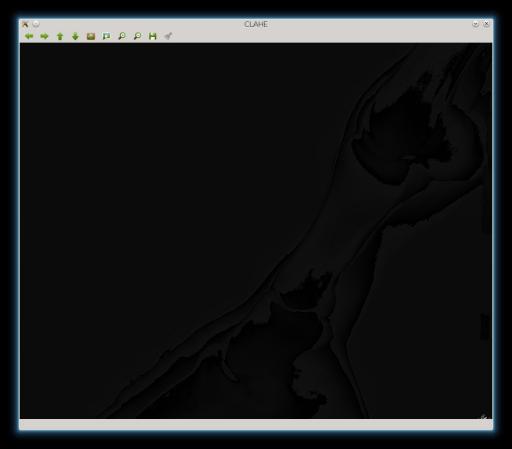Hello,
I'm trying to use the openCV CLAHE implementation on 16 bits medical images and the results are not what I expected, it looks like the algorithm overlflows, resulting in a very dark image. If I convert the original image to CV_8U using cv::Mat:: convertTo() with an alpha value = 1.0 / (1 << (BitsStored - 8)), this is because images are really 10 or 12 bit unsigned int images, the result is correct and what I expect, see the examples below.
Original image

8 bits CLAHE

16 bits CLAHE

The code is very simpe
int main(int argc, char *argv[])
{
QApplication a(argc, argv);
// Load DICOM Image
DcmObject raw;
if( !raw.load("rawimage.dcm") )
qCritical(qPrintable(QString("Error loading rawimage.dcm: %1").arg(raw.errorString())));
// Convert to cv::Mat, internally can covert to 8 bit if wanted
cv::Mat mat = dcmImageToCvMat(DcmImage(raw));
cv::imshow("GRAYSCALE", mat);
cv::Ptr<cv::CLAHE> clahe = cv::createCLAHE(3.0, cv::Size(8,8));
cv::Mat dst;
clahe->apply(mat, dst);
cv::imshow("CLAHE", dst);
cv::waitKey();
}
Below is the code I use to convert from DICOM to cv::Mat:, it uses a dicom toolkit written by me:
cv::Mat dcmImageToCvMat(const DcmImage &img, bool convertTo8Bits)
{
cv::Mat mat;
switch( img.pixelRepresentation() )
{
case DcmImage::PixelUInt8:
mat = cv::Mat(img.rows(), img.columns(), CV_8U);
break;
case DcmImage::PixelInt8:
mat = cv::Mat(img.rows(), img.columns(), CV_8S);
break;
case DcmImage::PixelUInt16:
mat = cv::Mat(img.rows(), img.columns(), CV_16U);
break;
case DcmImage::PixelInt16:
mat = cv::Mat(img.rows(), img.columns(), CV_16S);
break;
case DcmImage::PixelInt32:
case DcmImage::PixelUInt32:
mat =cv::Mat(img.rows(), img.columns(), CV_32S);
break;
}
// Get RAW Pixel data
img.raw(mat.data, 0, 0, img.columns(), img.rows(), mat.step);
// Invert if Photometric interpretation is MONOCHROME1 (white is 0)
if( img.photometricInterpretation()==DcmImage::PmiMonochrome1 )
{
cv::Mat max(mat.size(), mat.type());
max.setTo(img.maxPossibleValue());
mat = max - mat;
}
// Convert to CV_16U with correct scaling of values
switch( img.pixelRepresentation() )
{
case DcmImage::PixelInt8:
mat.convertTo(mat, CV_8U, 1.0, -img.minPossibleValue());
break;
case DcmImage::PixelInt16:
mat.convertTo(mat, CV_16U, 1.0, -img.minPossibleValue());
break;
case DcmImage::PixelInt32:
case DcmImage::PixelUInt32:
mat.convertTo(mat, CV_16U, 1.0 / double(1 << (img.bitsStored() - 16)), -img.minPossibleValue());
break;
}
// Converts to 8 bits if wanted
if( convertTo8Bits )
{
cv::Mat mat8;
float scale = 1 << (img.bitsStored() - 8);
float shift = img.isSigned() ? 127.0 : 0.0;
cv::convertScaleAbs(mat, mat8, 1.0 / scale, shift);
return mat8;
}
else
return mat;
}
Thank you very much,
Gianluca Ghelli

